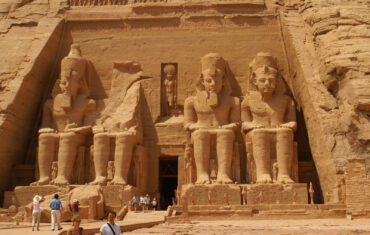On the west bank of the Nile, in Egypt, the Colossi of Memnon stand. Legend has it that they sang at dawn, but there is a grain of truth.

The Colossi of Memnon are two massive twin stone statues that stand on the west bank of the Nile River in Egypt. They depict the pharaoh Amenhotep III, who reigned about 3,400 years ago, in a seated position and with his hands resting on his knees, looking east.
The Colossi of Memnon: legendary music
At the time of their construction, the Colossi of Memnon guarded the Temple of Millions of Years, a sacred building that every pharaoh of the New Kingdom dedicated himself to affirm his divine nature. According to a legend, in 27 BC an earthquake caused the partial destruction of one of the statues, resulting in the collapse of the upper part and damage to the lower one.
![]()
Following this, a strange music could be heard coming from the base of the ruined Colossus, usually near dawn. In fact, it is likely that the increase in temperature evaporated the dew from the stone and thus produced a sound similar to a melody.
They are now a tourist attraction
This particular story fascinated Greeks and Romans, who traveled to the place hoping to hear the unusual melody, while for others the statue had oracular powers.
As evidence of these visits, still today one can read about 90 inscriptions of those who had heard the music emitted by the damaged Colossus, the last of which dates back to 196 AD.
![]()
Shortly after the restoration took place by order of the emperor Septimius Severus , in the hope that the oracle contained in it would grant him his grace. It is said that since then the music has ceased forever. Nowadays, the Colossi of Memnon “coexist” with a modern road that runs along the ruins of the ancient temple, which was destroyed, and have now become a tourist attraction.


